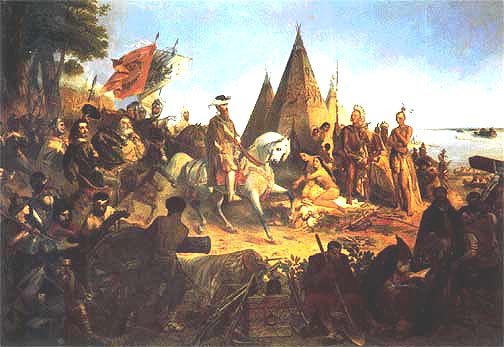DeSoto Discovers the Mississippi-1542
Desoto is best known for his exploration of the Southeastern United States and his discovery of the Mississippi River

Hernando de Soto's early experiences in the New World were primarily in South and Central America, where he played a role in the conquest of the Inca Empire. Intrigued by tales of gold in North America, and having amassed considerable wealth from his prior expeditions, de Soto was able to personally finance a well-equipped journey. His expedition included 620 Spanish and Portuguese volunteers, over 200 horses, and livestock for sustenance.
In May 1539, de Soto landed near present-day Bradenton, Florida. There, the expedition encountered Juan Ortiz, a Spaniard who had been captured by the natives during a previous expedition and had subsequently learned the native language. Ortiz became de Soto's guide.
The expedition proceeded north through what is now Georgia and continued into South Carolina. From South Carolina, they ventured into the mountains of North Carolina. Finding no gold, de Soto led his men into Tennessee, following the Tennessee River into Alabama.
They were led into a fortified Native American town, Mabila, in southern Alabama, where they were ambushed. Though de Soto managed to fight his way out, burning the town in the process, he suffered significant losses: 200 of his men were killed, and 150 were wounded. The expedition also lost much of its equipment. They spent the winter of 1540-1541 in present-day Mississippi.
In May 1541, the expedition reached the Mississippi River and proceeded northward along its course. They crossed the river near the location of modern-day Memphis. Despite enduring another harsh winter, the expedition continued its exploration until the spring of 1542, when de Soto fell ill with a fever and died.
The surviving members of the expedition, numbering 311 out of the original 620, decided to abandon their quest. They spent six months traveling to Mexico. During their three years in North America, they were responsible for the deaths of thousands of Native Americans.
 >
>